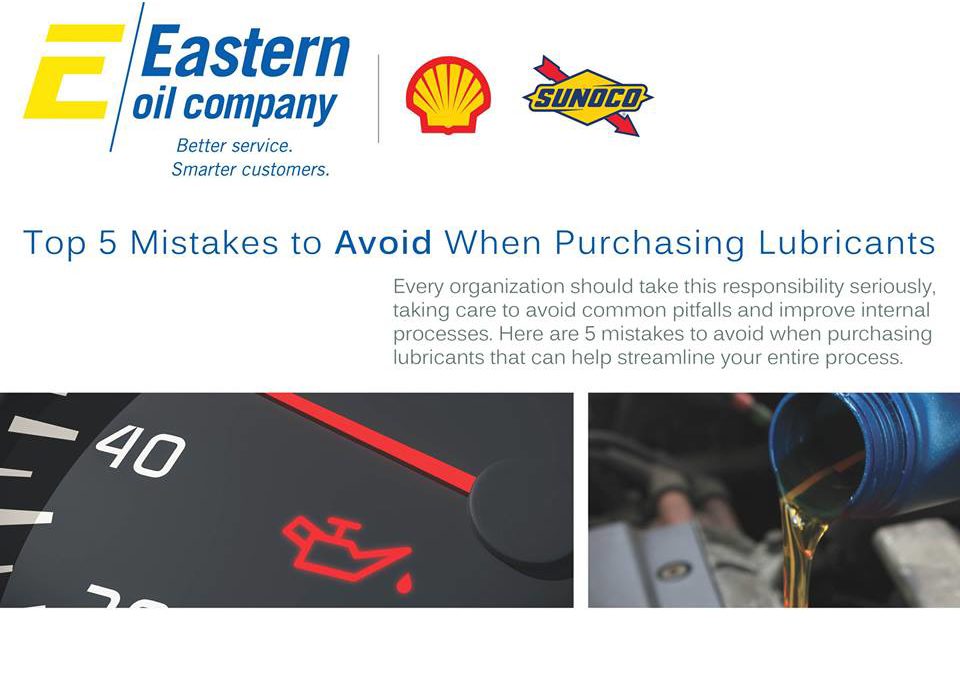Every organization should take this responsibility seriously, taking care to avoid common pitfalls and improve internal
processes. Here are 5 mistakes to avoid when purchasing lubricants that can help streamline your entire process.
1. If it isn’t broke, don’t fix it
Many fleet operators are loyal to the incumbent lubricant vendor and for good reason… They are reliable, service
is good and lubricants make up a small percentage of the overall operating budget. The industry has shown that
change is constant and vendors often neglect positions that favor their client. Is your current supplier offering
what is best for your organization’s needs or what’s best for their needs?
2. Underestimating quality control
Oil contamination leads to premature engine wear and potentially sudden engine failure. What is your supplier’s
quality control procedure? How are they ensuring that each delivery meets the original equipment manufacturers
(OEM) requirement? More importantly, what is your quality control procedure – are you contaminating
the oil? When purchasing or handling a lubricant, it is important to understand the supply chain and quality
control procedures that are in place to ensure product integrity.
3. Who’s really benefiting from the delivery schedule?
Time is money. Are you forced to stock excess inventory because you are working on your supplier’s
delivery terms? Does your current supplier offer a delivery window that is beneficial to your operation – can you
order and receive product in a timely fashion to offset an emergency? Same/next day delivery options should
always be available to assist with those unforeseen critical situations. When selecting a lubricant supplier, it’s
important to ask these questions and choose a vendor that views your emergency as an opportunity, rather
than an inconvenience.
4. Treating the lubricant like an asset… and not like the consumable product it is
Engine oils have a shelf life, whether it’s a 30,000-mile oil change interval or six-month oil change interval,
waste is inevitable. You are not purchasing an asset. Engine oils are the most regulated oils in the market.
The American Petroleum Institute (API) along with the original equipment manufacturer (OEM) regulate
and license engine oils. There are hundreds of licensed engine oils that all meet the same performance
specifications, are you using the oil that is most beneficial for your fleet and bottom line?
5. What warranty?
Who doesn’t love a warranty? There’s a good chance that you have a substantial amount of money invested in
your fleet and those trucks have to be on the road and performing to see a return on investment. It would only
make sense to use the best products – the nationally branded lubricants offer peace of mind through a limited
warranty, but what are they really offering? It might not be exactly what you think and the fine print defines
exactly what is and isn’t covered. Did you know the warranty does not cover mechanically deficient equipment
as a result of abnormal operation; negligence; abuse; damage from casualty, shipment or accident; or,
equipment modification done without written authorization from the original equipment manufacturer (OEM)?
Who can prove that the engine failure was a result of “abnormal operation?” Most of these limited warranties
are ambiguously written and designed to shift responsibility away from the supplier when failure occurs –
so what are you really paying for?


Recent Comments